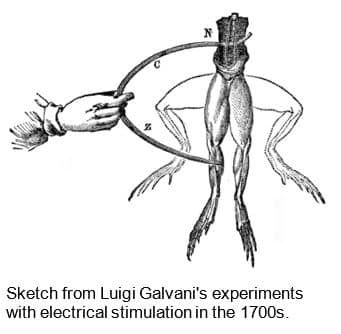Different Types of Electrical Stimulation Technology – The Name Game
Electrical stimulation is an incredible technology with the potential to dramatically change the way we restore and enhance the human body. Unfortunately, despite centuries of research on electrical stimulation, we still have yet to see the practical use of electrical stimulation reach its full potential.
Gad Alon, in his lecture at the APTA’s NEXT 2015 conference, said that one barrier to the acceptance of electrical stimulation as a standard of care is the “name game,” or, the absence of consensus on generic meaningful terminology and the prevailing promotion of erroneous and misleading jargon.
Learn More About the MyoCycle and How to Obtain One
Types of Electrical Stimulation
Electrical stimulation research will lead you to discover a lot of names, abbreviations, and acronyms, including:
- Electrical muscle stimulation (EMS)
- Russian electrical stimulation
- Neuromuscular electrical stimulation (NMES)
- Functional electrical stimulation (FES)
- Transcutaneous electrical nerve stimulation (TENS)
- and many more…
All of these names refer to the same basic thing. Namely, applying electricity to the body to increase or decrease activity in the nervous system. The different names come from applying the current in different ways, to different parts of the body, or for different reasons. Part of the problem that Gad Alon referred to is the fact that people will say they use a particular kind of electrical stimulation, like Russian electrical stimulation, without ever explaining what it really means.

Generally speaking, the different names reflect either the intended use of the electrical stimulation or the characteristics of the stimulation itself. For example, EMS and Russian electrical stimulation are both generally intended for athletic training, but Russian stimulation uses high-frequency sinusoidal waveforms, whereas EMS typically uses lower-frequency rectangular waveforms. As another example, TENS units are typically used for pain relief, while NMES units are used to retrain muscles after an injury, even though both TENS and NMES use similar stimulation waveforms.
Instead of trying to solve the problem of the name game, this post provides a brief explanation of the most common types of electrical stimulation and how they are used in therapy. Hopefully, this information will help you avoid the pitfalls of the name game and choose the right therapeutic modality for your purposes.
Learn More About the MyoCycle and How to Obtain One
Transcutaneous electrical nerve stimulation (TENS)
- Intended for temporary pain relief in sore and aching muscles or for symptomatic relief of chronic pain
- Most pervasive type of electrical stimulation. For example, a search for “TENS units” on Amazon.com brings up over 60,000 results.
- Typically limited in functionality, but cheap as a result
Interferential current (IFC) electrical stimulation
- Intended for symptomatic relief of acute, chronic, and post-traumatic or post-surgical pain
- Similar to TENS, but generally more effective and powerful
- Much less common than TENS, but more functional and more expensive
Electrical muscle stimulation (EMS)
- Intended for strengthening muscles, increasing muscle size, improving muscular endurance, and accelerating muscle recovery
- Also similar to TENS, but designed to make the muscles contract strongly
- Typically used by athletes, especially for muscle recovery
Russian stimulation
- Intended for strengthening muscles, increasing muscle size, improving muscular endurance, and accelerating muscle recovery
- Similar to EMS, but uses high frequency, sinusoidal stimulation waveforms
- Popularized in the 1970s when Russian researchers used EMS to enhance the training of Olympic athletes
Neuromuscular electrical stimulation (NMES)
- Intended for relaxing muscle spasms, preventing muscle atrophy, increasing blood circulation, maintaining or increasing range of motion, and especially for re-educating the neuromuscular system
- Essentially the same as EMS, but typically focused on therapeutic use (rehab) instead of athletic use (training)
Functional Electrical Stimulation (FES)

- Intended for relaxing muscle spasms, preventing muscle atrophy, increasing blood circulation, maintaining or increasing range of motion, and especially for re-educating the neuromuscular system
- Essentially the same as NMES, but they are especially effective for neurological rehabilitation, as the stimulation is automatically controlled to turn muscle contractions into functional movements
- Usually incorporated into an exercise or bracing device to maximize functionality
Download the Name Game Free Ebook
Are you interested in learning more about the name game? Check out our Free Ebook!
Download Now!The MyoCycle Is Your Best Choice for FES Exercise
If you’d like to know more about the applications of functional electrical stimulation (FES) or the benefits of FES cycling, check out our MyoBlog.
Reach out to us to learn more about the MyoCycle and how you can get one for home or clinical use today!
